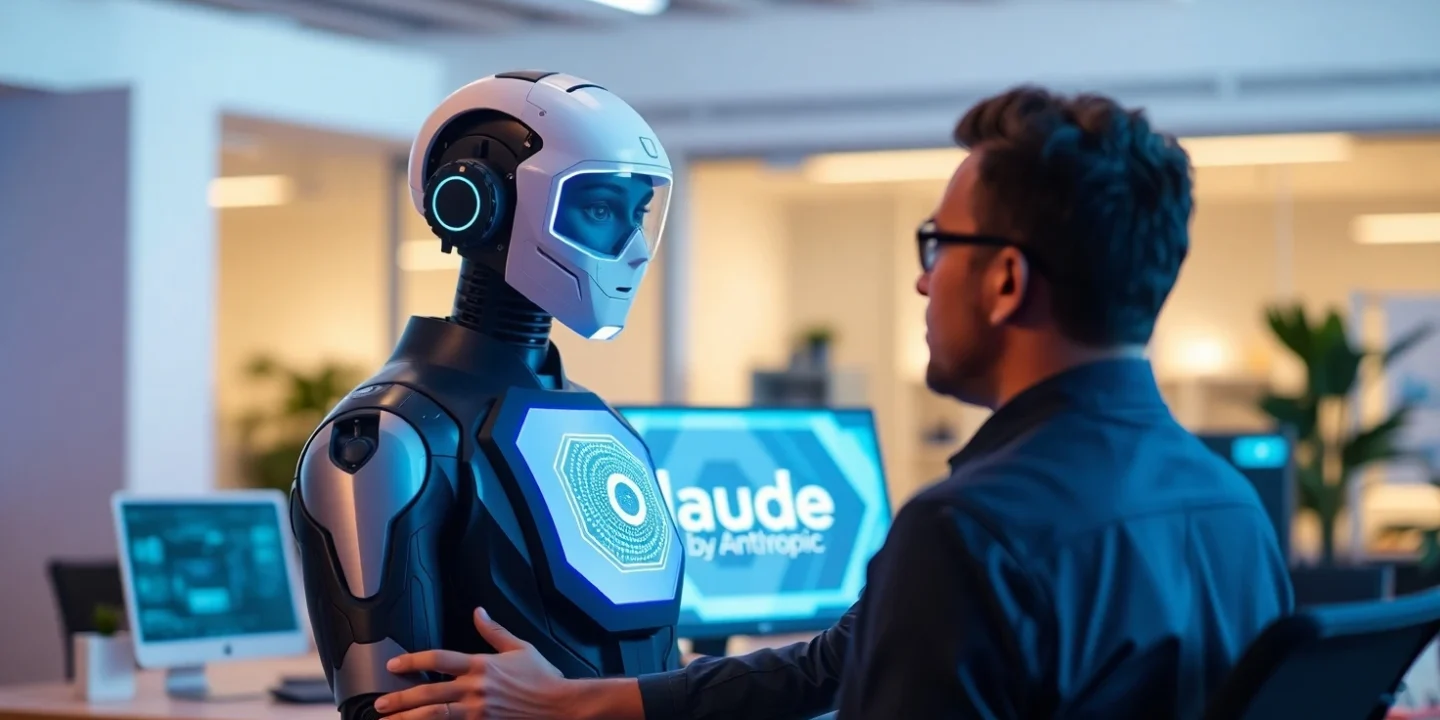- Home
- AI & Tech Tools
- Claude AI: The Next Big Thing ...

In the rapidly evolving world of artificial intelligence, new tools are introduced monthly. Among them, Claude AI, developed by Anthropic, creates waves for all the right reasons. Whether you are a tech enthusiast, a content creator, a researcher, or just someone curious about the future of AI, Claude offers a fresh, human-centered approach to chatbot technology. This blog will explore Claude AI, its standout features, and how it compares to leading AI tools like ChatGPT.
What is Claude AI?
Claude AI is an AI-powered chatbot created by Anthropic, a company founded by former OpenAI employees. Named after Claude Shannon, the father of information theory, Claude aims to be a safe, helpful, and honest AI assistant. Anthropic’s mission centers around building AI aligned with human values, and Claude is a direct outcome of that vision.
Unlike many AI models that prioritize technical performance alone, Claude is designed to focus on ethical behavior, user safety, and clarity. It uses a unique “Constitutional AI” technique to train the model to self-correct and respond more responsibly.
Top Features of Claude AI
Here are some of the most impressive features that make Claude stand out:
1. Human-like Responses
Claude AI is designed to sound natural, polite, and thoughtful. Conversations feel less robotic and more like speaking with an actual human assistant.
2. Long Context Understanding
With the latest Claude 3 series, the AI can process up to 100,000+ tokens, which allows it to understand and respond to lengthy documents, articles, or conversations.
3. Privacy-First Design
Claude prioritizes user privacy. Claude is designed to minimize data retention and respects user confidentiality, unlike some AI tools.
4. Multifunctional Assistant
Whether you are coding, drafting emails, summarizing PDFs, or brainstorming creative ideas, Claude AI adapts well across various tasks.
5. Low Hallucination Rate
Claude is less likely to generate inaccurate or made-up information, also known as “hallucinations,” a common problem in many AI models.
Claude 3 Series Overview
In 2024, Anthropic launched the Claude 3 family of models:
- Claude 3 Haiku – A lightweight, fast model suitable for basic tasks.
- Claude 3 Sonnet – A balanced model ideal for general use.
- Claude 3 Opus – The most powerful model, built for complex reasoning and enterprise-level tasks.
All three models show significant improvements in reasoning, math, and code generation compared to earlier versions.
How to Use Claude AI
Using Claude AI is intuitive and straightforward. Here’s how you can get started:
1. Website Access
Visit claude.ai and create a free account to start using the chatbot.
2. API Access
Developers can integrate Claude into their applications via Anthropic’s API, making it ideal for building AI-driven tools and services.
3. Third-Party Integrations
Claude is already integrated with tools like Notion AI and Slack, allowing users to get AI assistance directly inside their workflow.
Claude AI vs ChatGPT: A Comparison
Claude AI is often compared to OpenAI’s ChatGPT. Here is how they stack up:
FeatureClaude AIChatGPT (GPT-4 Turbo)
Developer Anthropic OpenAI
Privacy Focused Yes Partial (data used for training)
Max Token Limit 100 K+ 128K (GPT-4 Turbo)
Language Quality: Very polite, human-like, Professional, and versatile
Hallucination Rate: Low, Medium
Free Access Limited Yes (GPT-3.5 version)
Best For Sensitive tasks, documents, Coding, research, and writing
Why Should You Use Claude AI?
Claude is not just another chatbot. Here is why it might be the right choice for you:
- Writers & Creatives: Get help drafting, rewriting, or brainstorming content ideas.
- Students & Researchers: Summarize academic texts or generate research ideas.
- Developers: Debug code, generate scripts, and learn new programming concepts.
- Businesses: Automate customer support or integrate AI in internal tools.
Limitations of Claude AI
Like all AI tools, Claude has its own set of limitations:
- Limited Free Access: Some versions are only available via API or paid access.
- Still Learning: Although smarter than many peers, Claude sometimes gives incorrect answers.
- Region-Specific: Availability may be limited in certain countries.
The Future of Claude AI
Anthropic actively invests in making Claude smarter, safer, and more valuable. With growing interest from enterprises and integrations across productivity tools, Claude is well-positioned to become one of the most trusted AI assistants in the coming years.
Its commitment to ethical AI and alignment with human values makes Claude stand out in a crowded AI market.
Conclusion
In summary, Claude AI is a powerful, ethical, user-friendly chatbot redefining what AI assistants can do. Built with care and a clear vision by the team at Anthropic, Claude offers a promising alternative to traditional chatbots, especially for those who value privacy, human-like communication, and trustworthy responses.
As AI continues evolving, Claude reminds us that technology can be intelligent and humane.
If you have not tried it yet, head to claude.ai and see what makes Claude different.
FAQs About Claude AI
Q1: Is Claude AI free to use?
A: Claude offers limited free access. Advanced versions may require API or enterprise access.
Q2: Can Claude write code?
A: Yes, especially with the Claude 3 Sonnet and Opus models, Coding help is very accurate.
Q3: How is Claude different from ChatGPT?
A: Claude is designed to focus more on ethics, long context understanding, and privacy.
Q4: Who owns Claude AI?
A: Claude AI is developed and owned by Anthropic, a company founded in 2021 by former OpenAI researchers.
Have you tried Claude AI yet? Let us know your experience in the comments below!







